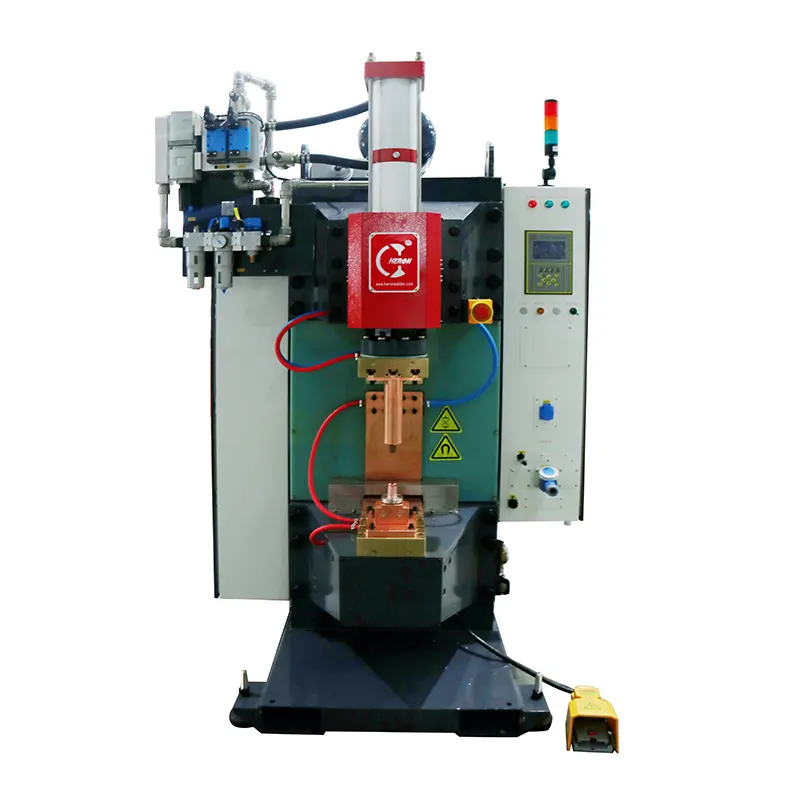How to reduce welding residual stress?
Welding stress is an important factor that causes various welding cracks in welded joints, and the residual stress left in the weldment after welding will affect the service life of the structure. Therefore, in order to improve the welding quality of the entire component, measures must be taken to control and reduce Small welding residual stress.
1. Adopt reasonable welding sequence and direction
(1) For welds on the welding plane, ensure that the longitudinal welds and transverse welds (especially the transverse direction) can shrink freely. If welding butt welds, the welding direction should point to the free end.
(2) Weld the welds with larger shrinkage first. If there are butt welds or fillet welds on the structure, the butt welds with larger shrinkage should be welded first.
(3) Weld the short transverse welds first.
(4) Welds with greater stress during operation are welded first to make the internal stress distribution reasonable.
(5) When welding cross butt welds, the welding sequence must be adopted to ensure that defects are less likely to occur at the intersection. When welding T-shaped welds and cross welds, the welds welded first at the intersection should be shoveled clean, as shown in the figure Only by sequential welding can the T-shaped welds and cross welds shrink more freely in the lateral direction, which helps to avoid cracks at the intersection of the welds.
2. Reduce the local rigidity of the welded structure
When the structural rigidity increases, the welding stress increases accordingly. Therefore, reducing the local rigidity of the welded parts of the component is beneficial to reducing the stress. When welding closed welds or welds with greater rigidity, the anti-deformation method can be used to reduce the stress. The local rigidity of the structure or the method of opening relaxation grooves near the welds can reduce the local rigidity of the welded parts.
3. Heating stress reduction zone
When welding, heating those parts that hinder the free expansion and contraction of the welding zone so that they expand and contract simultaneously with the welding zone can reduce the welding stress. This method is called the heating "stress reduction zone" method, or the synchronous shrinkage method. The heated part is called the stress reduction zone.
4. Use cold welding method to reduce welding residual stress
The principle of cold welding is to try to make the temperature distribution on the welded structure as uniform as possible, requiring the local temperature of the weld to be controlled as low as possible, and at the same time, the volume of this part in the overall welded structure should be as small as possible. This should be minimized in the structure. The method of small temperature difference can effectively reduce welding residual stress and reduce the tendency of thermal stress cracks.
In cold welding operations, use smaller diameter electrodes, smaller welding current, and only weld a short section of weld each time. For example, for repair welding of cast iron, each section only welds 1040mm. For welding rigid components, each section Only weld one or half a welding rod at a time. After each welding pass, it must be cooled to a point where it is no longer hot to the touch before welding the next welding seam.
5. Hammer welds
During the cooling process of each weld, use a small round-head hammer to hammer the weld, so that the weld metal will produce plastic tensile deformation and extend around, offsetting the shrinkage of the weld and reducing the internal stress. The hammering should be maintained Be even and moderate to avoid excessive hammering resulting in excessively deep hammer marks.
6. Preheat before welding
The purpose of preheating before welding is to reduce the temperature gradient between the welding zone and the structure, reduce the degree of constraint, and achieve the purpose of reducing the internal stress of the welding. The preheating of the weldment before welding can be preheated as a whole or locally in the welding zone. Preheating methods include overall heating in the furnace, local far-infrared heating, local power frequency heating, flame heating, etc.
Contact Person: Christina Liu
Tel: 86 20 87813325 / 86 20 87819588 / 86 20 87815075
Fax: 86 20 87813346
Address: No.63 Xin Yi Road, Guangzhou, Guangdong China 510990














